The Volkswagen K 70
The Volkswagen K 70
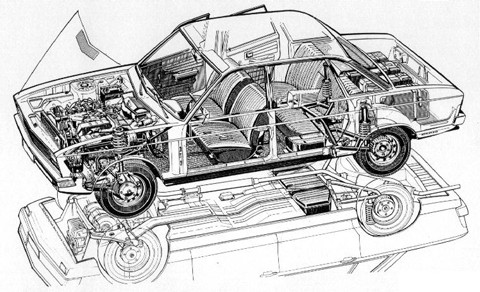
American car enthusiasts commonly think of the Golf (formerly, and yet again U.S. Rabbit) and Jetta as Volkswagen’s first cars with water-cooled engines and front wheel drive. But they didn’t start the era. In fact, it began with a car basically unknown to the American audience. Its name was K 70. Don’t expect to see a resurgence of this car on the “retro” market; it lacks the cutesy appeal of the Mini-Cooper, or the seeming built-in Beach Boys soundtrack that accompanies the New Beetle. But there’s still a following in Europe for the “Little K”, as it’s sometime called, with enthusiasts gathering in clubs as well as participating at oldtimer races and competitions. Depending on engine and equipment, the oldtimer market price for a K 70 in very good condition is currently somewhere between $3,600 to 4,300.
The car was actually engineered by the German car manufacturer NSU. 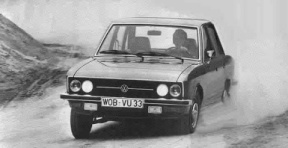 This company pioneered in the production of motorbikes in 1901 and started producing their own cars in 1906. (NSU referred to the company’s hometown, Neckarsulm, in southern Germany ). The company was famous for its avant-garde Ro 80 in the 60’s early 70’s, which was equipped with a Wankel rotary engine and targeted at the luxury segment.
This company pioneered in the production of motorbikes in 1901 and started producing their own cars in 1906. (NSU referred to the company’s hometown, Neckarsulm, in southern Germany ). The company was famous for its avant-garde Ro 80 in the 60’s early 70’s, which was equipped with a Wankel rotary engine and targeted at the luxury segment.
NSU also produced the Prinz, a boxy, sporty subcompact with rear engine--an early predecessor to the Audi TT. As a mid-sized sedan, the K 70 (“K” for “Kolben”--“piston”) was supposed to fill the gap. However, these plans ended when NSU was taken over by VW in 1969. During that time VW found itself at a conceptual dead end with its own air-cooled, boxer engine platforms. The K 70, as a “dowry”, was a chance to head in a different direction. Without major re-engineering, VW released it in 1970 as its own.
Volkswagen had the middle class segment in mind when they launched the K 70. The VW 411/412 (Type 4) with air-cooled boxer engine and the Audi 100 were already established in that market. Nonetheless, VW accepted possible ‘internal’ competition. The typical buyer of a K 70 would nowadays be looking at an Audi A6; aware of a VW Passat as the economic alternative. Dealerships at that time were longing for the K 70 as an opportunity to sell to a more upscale market than the (old) Beetle or its slightly larger Type 3 derivatives, VW 1500/1600 (sold here as Notchback, Squareback, and Fastback).
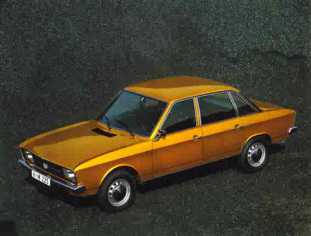 The K 70 was produced solely as a four door squareback in the tradition of the “brick-atop-a-brick” design . The hood, unconventionally, was hinged up front, opening right below the windshield, which was the only considerably slanted piece of glass. The side windows were almost straight, protecting the passengers from excessive sun impact and allowing for ample head room. The upright seating position, the low belt line and the large glass sections created a panoramic view all around. Thanks to the relatively long wheel base, the passenger compartment was spacious and leg-friendly.
The K 70 was produced solely as a four door squareback in the tradition of the “brick-atop-a-brick” design . The hood, unconventionally, was hinged up front, opening right below the windshield, which was the only considerably slanted piece of glass. The side windows were almost straight, protecting the passengers from excessive sun impact and allowing for ample head room. The upright seating position, the low belt line and the large glass sections created a panoramic view all around. Thanks to the relatively long wheel base, the passenger compartment was spacious and leg-friendly.
Foreshadowing the current standard of folding rear seats, the rear assembly could be unbolted quickly and taken out, thus, opening up an enormous cargo space with no metal wall between trunk and passenger compartment. The trunk opening, though big, did not reach down to the bumper level, making it a bit hard to load certain items, like long boards. The fully reclining front seats solved this problem to some extent, allowing long pieces to push straight up to the dash. The trunk capacity in itself, however, was already huge to begin with, given the square design. As a consequence, the aerodynamic properties were more than wanting, with tests resulting in collapsed wind tunnels, as the joke went.
The K 70 came with four cylinder engines and a manual four speed transmission only. The longitudinally mounted engines had a displacement of 1600 cc and a horsepower of 75 and 90, which translated into a top speed of 148 and 160 km/h (92/100mph). Later an 1800 cc version was launched with 100 hp.
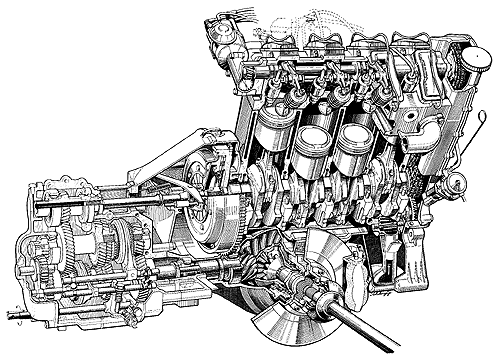
NSU had bestowed a modern engine design: the dual chain driven overhead camshaft was located in a crossflow alloy cast cylinder head actuating the opposed intake and exhaust valves over a twin rocker-arm assembly. The eight separate gold-colored galvanized valve covers were a visual delight. The coolant-heated intake manifold was fed by a double-barrel sidedraft Solex DDH carburetor with manually operated choke, which was substituted after the first production year by the DDHT version with automated choke system. The fuel pump was actuated by rod and excenter off the oil pump, itself a gear type pump driven via gear assembly by the crankshaft (a five main-bearing design).
The cast iron engine block with its alloy oil pan sat with its third and fourth cylinder over the front axle, right on top of the differential. This improved weight distribution and winter driveability without overdoing the weight accumulation up front (with its mass inertia problems) like the old Audis. This arrangement, however, stacked the engine/drivetrain assembly unusually high, leaving the transmission to bridge the height difference with an additional input shaft, of necessity a three shaft gear box. Very atypically, the input shaft was partially hollow and a two-piece unit: the solid part started right outside the gear box ran through the clutch, engaged with the splines of the clutch friction plate, and ended up in the needle bearing of the crankshaft. However, it was retractable into its hollow counterpart inside the transmission. This smart feature allowed the clutch to be serviced without having to remove the gear box, without even raising the car – a feature basically non existent among today’s cars.
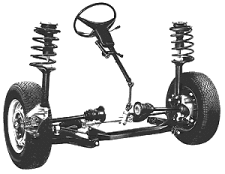
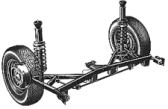 Independent front and rear suspension were not standard in those days. These components were lifted from the NSU Ro 80. The front had Mc Pherson struts with lower wishbones and a swaybar. In an attempt to reduce the unsprung weight, the front disc brakes were mounted inboard, on to the differential housing. Ensuring firmness and tight response, a rack-and-pinion steering system was chosen; unfortunately a power-assisted version was never made available. The rear suspension was equipped with semi-trailing arms, struts/shock absorber assemblies and, also, initially, a swaybar.
Independent front and rear suspension were not standard in those days. These components were lifted from the NSU Ro 80. The front had Mc Pherson struts with lower wishbones and a swaybar. In an attempt to reduce the unsprung weight, the front disc brakes were mounted inboard, on to the differential housing. Ensuring firmness and tight response, a rack-and-pinion steering system was chosen; unfortunately a power-assisted version was never made available. The rear suspension was equipped with semi-trailing arms, struts/shock absorber assemblies and, also, initially, a swaybar.
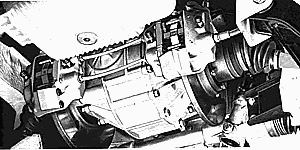 The front disc brakes had four-piston calipers and non-vented rotors. The rear was equipped with drums. The dual-circuit braking system was a diagonal layout with additional inclusion of both front calipers, which meant at least half of the braking power of both front brakes and one rear brake, respectively. This eliminated the dangerous pulling to one side of conventional one-front-brake-left diagonal systems. The braking system was power-assisted and came with a load-dependent rear brake pressure-regulating valve to control rear wheel lock-up. With all this cautious equipping, however, the rear drum brakes were rather powerful units, frequently operating at the border of overbraking.
The front disc brakes had four-piston calipers and non-vented rotors. The rear was equipped with drums. The dual-circuit braking system was a diagonal layout with additional inclusion of both front calipers, which meant at least half of the braking power of both front brakes and one rear brake, respectively. This eliminated the dangerous pulling to one side of conventional one-front-brake-left diagonal systems. The braking system was power-assisted and came with a load-dependent rear brake pressure-regulating valve to control rear wheel lock-up. With all this cautious equipping, however, the rear drum brakes were rather powerful units, frequently operating at the border of overbraking.
In the lower to mid-rev’s the K 70 drove smooth and quiet. The long wheel base contributed largely to the exceptional directional stability at all speeds. Few competitors came close. Cornering response was direct and swift. High speed cornering was no problem--no nasty surprises. Pushing the car into drift would unmistakably cause stubborn understeering.
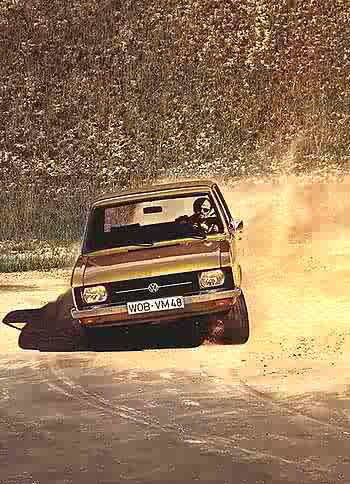 Quiet disconcerting to look at (but harmless) was the pronounced level of body-roll towards the outer curve radius – almost French-style. The brakes decelerated powerfully with an astoundingly low level of fading, given their inboard location. Large vent tubes, installed after the first production year, aided in thermal health. Suspension and brakes were completely at ease at top speeds. The engine, however, was not: It was thirsty, especially in combination with the poor aerodynamics (even a currentV8 Audi A8 gets better mileage) but most of all, the engine was rather loud and rough at high rpm’s. Its domain was cruising not racing. Nonetheless, it was used for competitions, even at Safari rallies in Africa.
Quiet disconcerting to look at (but harmless) was the pronounced level of body-roll towards the outer curve radius – almost French-style. The brakes decelerated powerfully with an astoundingly low level of fading, given their inboard location. Large vent tubes, installed after the first production year, aided in thermal health. Suspension and brakes were completely at ease at top speeds. The engine, however, was not: It was thirsty, especially in combination with the poor aerodynamics (even a currentV8 Audi A8 gets better mileage) but most of all, the engine was rather loud and rough at high rpm’s. Its domain was cruising not racing. Nonetheless, it was used for competitions, even at Safari rallies in Africa.
Given the standards of its time, the K 70 was fairly well equipped–at least if ordered with some optional packages. Of course it didn’t have all the active and passive safety features of this time, nor the flood of electronic gadgets expected nowadays. The 1960’s were still marked, for instance, by heating systems depending on the belt-driven cooling fan of the rear engine, like the air-cooled VW’s. Thus, the K 70 was the first VW product with a heating/venting system that is still the standard: a heater core that is hooked up to the engine’s coolant system, and an electric blower that dissipates the heat through blowing air from the outside over the fins of the heater core into the passenger compartment by using various vent openings. The valve regulating the hot coolant had an internal thermostat to steady the heater core temperature in case of changing engine speeds. To allow for a constant air flow, vent openings in the rear with one-way flaps were installed for the air to exit, first in the C-pillars later in the rear doors, designed to create just enough swirl to assist to keep the rear window from fogging. An air conditioning system, however, was never offered.
The K 70 came with the modern, much more efficient three-phase type alternator, first with external mechanical regulator, then with an integrated electronic one.
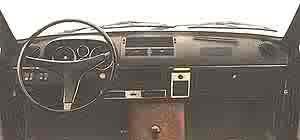 The dash had round instruments grouped together under an oval visor, which included tachometer, speedometer, fuel and coolant temperature, warning lamps and clock. Halogen headlights were available, as H4 (then the new industry standard) or as H1 with high and low beam being separate headlight units. Also, radial tires were standard: 165mm wide, on 14 inch rims (alloys optional).
The dash had round instruments grouped together under an oval visor, which included tachometer, speedometer, fuel and coolant temperature, warning lamps and clock. Halogen headlights were available, as H4 (then the new industry standard) or as H1 with high and low beam being separate headlight units. Also, radial tires were standard: 165mm wide, on 14 inch rims (alloys optional).
The K 70 did well regarding active and passive safety issues and crash ratings. The gas tank was mounted underneath the rear seats, away from collision areas. A collapsible/retractible steering column was standard, as well as safety belts for the front seats (an emerging standard/legal requirement at its time) with headrests being optional, as well as a heated rear window.
The K 70 was sold all over Europe, and in Britain, of course, as a right-hand-drive version. It was never marketed in North America but interestingly it was shipped to places like Australia, Japan and even countries with tropical climates.
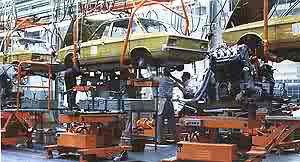 So what happened to the K 70? Volkswagen never made a commitment to integrate its inheritance from NSU into its own production line. This ensured that production costs would be quite high. In comparison, the first Passat (sold in the U.S. as “Dasher” and being actually an Audi 80 spin-off) was far cheaper to manufacture. Model improvement and technological upgrading ended finally on the backburner, with the production ceasing after some five years and over 200,000 units produced. But believe it or not, VW/Audi is still supplying spare parts and offering service.
So what happened to the K 70? Volkswagen never made a commitment to integrate its inheritance from NSU into its own production line. This ensured that production costs would be quite high. In comparison, the first Passat (sold in the U.S. as “Dasher” and being actually an Audi 80 spin-off) was far cheaper to manufacture. Model improvement and technological upgrading ended finally on the backburner, with the production ceasing after some five years and over 200,000 units produced. But believe it or not, VW/Audi is still supplying spare parts and offering service.
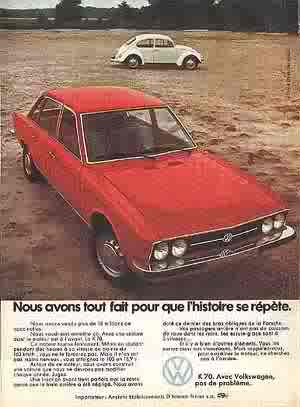 And servicing it did need, as I well remember: On a family trip through Greece and Turkey, the fuel pump of our 1974 K 70 started to slowly break down. Leaving Athens, the car began running unevenly and hesitating at all speeds except idle. First, it felt like a carburetor clogging issue. A fuel pump with too little output but still operating is hard to diagnose by pulling off the fuel hose and cranking the engine. Measuring the fuel pressure wasn’t an option, of course. So we decided to simply go on. Refueling helped a bit, because, as it later turned out, the relatively cold gasoline pumped up from below had a short term remedy impact on the pump. Thus, we made it safely to Istanbul. On the way back, however, crossing Bulgaria, things got serious. A Communist Balkan state in the late 70’s, we knew, was not likely to be well-stocked with engine parts, let alone car dealerships. Approaching Sofia, a collection of dreary Stalinist-style bunkers, the engine hesitated heavily and finally stalled. Providentially, we were close to a gas station. We pushed the car into the station and filled it up, but by now it would no longer start. The diagnosis was now simple: the fuel hose was completely dry, the clear-glass fuel filter wasn’t clogged , which left only the fuel pump to be the cause.
And servicing it did need, as I well remember: On a family trip through Greece and Turkey, the fuel pump of our 1974 K 70 started to slowly break down. Leaving Athens, the car began running unevenly and hesitating at all speeds except idle. First, it felt like a carburetor clogging issue. A fuel pump with too little output but still operating is hard to diagnose by pulling off the fuel hose and cranking the engine. Measuring the fuel pressure wasn’t an option, of course. So we decided to simply go on. Refueling helped a bit, because, as it later turned out, the relatively cold gasoline pumped up from below had a short term remedy impact on the pump. Thus, we made it safely to Istanbul. On the way back, however, crossing Bulgaria, things got serious. A Communist Balkan state in the late 70’s, we knew, was not likely to be well-stocked with engine parts, let alone car dealerships. Approaching Sofia, a collection of dreary Stalinist-style bunkers, the engine hesitated heavily and finally stalled. Providentially, we were close to a gas station. We pushed the car into the station and filled it up, but by now it would no longer start. The diagnosis was now simple: the fuel hose was completely dry, the clear-glass fuel filter wasn’t clogged , which left only the fuel pump to be the cause. 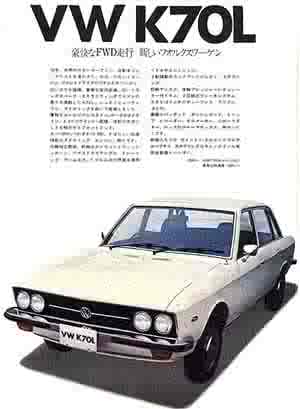 As we considered our options, we were approached by a number of locals who seemed to spend their days hanging out by the station. Surviving in a country used to “improvisation”, they decided that our car could make it. All that was needed was a ‘special’ treatment, which they offered to prove to us. They poured cold water over the pump body for a minute or two and then one of them started to suck at the fuel hose while cranking the engine. And after a little bit, the pump did indeed resume work. We were grateful, presented them with a small gift, and made it back home to Germany. But there the pump was replaced. After all you don’t want to tempt fate.
As we considered our options, we were approached by a number of locals who seemed to spend their days hanging out by the station. Surviving in a country used to “improvisation”, they decided that our car could make it. All that was needed was a ‘special’ treatment, which they offered to prove to us. They poured cold water over the pump body for a minute or two and then one of them started to suck at the fuel hose while cranking the engine. And after a little bit, the pump did indeed resume work. We were grateful, presented them with a small gift, and made it back home to Germany. But there the pump was replaced. After all you don’t want to tempt fate.
References (8)
-
 Response: cadeau[theengageddriver.squarespace.com] - Journal - The Volkswagen K 70
Response: cadeau[theengageddriver.squarespace.com] - Journal - The Volkswagen K 70 -
 Response: COACH 時計[theengageddriver.squarespace.com] - Journal - The Volkswagen K 70
Response: COACH 時計[theengageddriver.squarespace.com] - Journal - The Volkswagen K 70 -
 Response: click[theengageddriver.squarespace.com] - Journal - The Volkswagen K 70
Response: click[theengageddriver.squarespace.com] - Journal - The Volkswagen K 70 -
 Response: http://alaskafarmersmarket.com[theengageddriver.squarespace.com] - Journal - The Volkswagen K 70
Response: http://alaskafarmersmarket.com[theengageddriver.squarespace.com] - Journal - The Volkswagen K 70 -
 Response: ALTINSOFT Information Technology[theengageddriver.squarespace.com] - Journal - The Volkswagen K 70
Response: ALTINSOFT Information Technology[theengageddriver.squarespace.com] - Journal - The Volkswagen K 70 -
 Response: rencontres[theengageddriver.squarespace.com] - Journal - The Volkswagen K 70
Response: rencontres[theengageddriver.squarespace.com] - Journal - The Volkswagen K 70 -
 Response: joanns coupons[theengageddriver.squarespace.com] - Journal - The Volkswagen K 70
Response: joanns coupons[theengageddriver.squarespace.com] - Journal - The Volkswagen K 70 -
 Response: corinnegidqqf.soup.io[theengageddriver.squarespace.com] - Journal - The Volkswagen K 70
Response: corinnegidqqf.soup.io[theengageddriver.squarespace.com] - Journal - The Volkswagen K 70

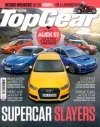

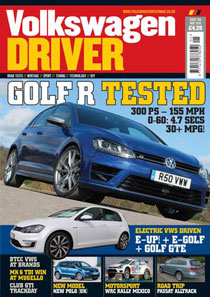

Reader Comments